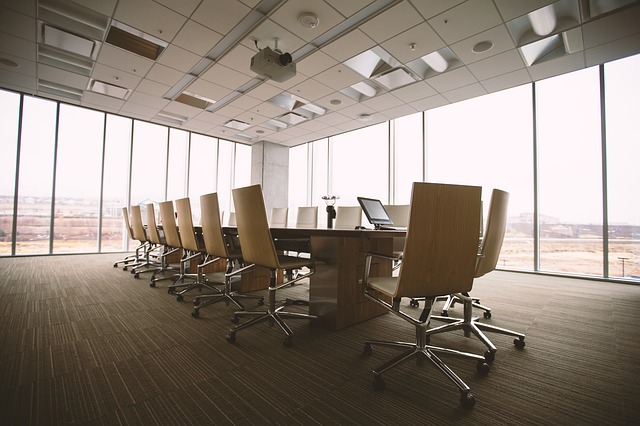 The convening of a big group of domestic shipping lines, stakeholders, and consumers is being eyed to push the Philippine government to address the issue of high domestic shipping operations, seen as the reason for inflated domestic shipping rates.
The convening of a big group of domestic shipping lines, stakeholders, and consumers is being eyed to push the Philippine government to address the issue of high domestic shipping operations, seen as the reason for inflated domestic shipping rates.
Supply Chain Management Association of the Philippines (SCMAP) executive director Norman Adriano, during the association’s general membership meeting (GMM) on August 17, said they plan to convene a group composed of SCMAP, Philippine Inter-Island Shipping Association (PISA), and consumer groups to make a representation and push government to “correct the causes of why domestic shipping cost is high.” Adriano said this can lead to lower shipping rates and may even prevent unnecessary fees from being imposed.
Adriano said it is high time to include consumers in their cause, as they must ultimately pay for these costs.
The idea of organizations finally bonding together to ask the government to step up came from a representative of logistics company DB Schenker Philippines who, during the GMM, asked why it was costlier to ship domestically than to ship outside the country.
PISA executive director Atty. Pedro Aguilar, during the same GMM, said his group has for decades pushed for measures to lower the operating costs of domestic shipping lines, but to no avail. He pointed out that although more than 90% of the country’s trade is transported by sea, shipping seemed not to be on the radar of the government.
He recalled that years ago, during the deliberation of a bill to develop the domestic shipping industry (which would later become Republic Act No. 9295, or the Domestic Shipping Development Act of 2004), PISA pushed for duty- and tax-free fuel for ships, similar to that for domestic airlines, but its request was not granted.
When domestic shipping lines complained, he said the government imposed duty and tax on airlines instead.
Aguilar said that “it’s about time that every one of us, especially consumers,” joins PISA in asking the government to look at the plight of domestic shipping as costs are ultimately shouldered by consumers. He pointed out that shipping, while a public service, is still a business, and any increase in its operating costs will only be passed on to clients.
High cost of doing business
Aguilar said the cost of doing business in the Philippines is one of several factors for the high cost of operating domestic ships.
“Domestic ships are being saddled with high cost of operating the ship,” Aguilar said.
He noted that the biggest component of operating costs is fuel, which accounts for 40% to 50% of a ship’s total operational costs. Unlike foreign shipping lines, domestic shipping lines are levied duties and taxes for fuel used.
Aguilar also noted the increase of P2.50 per liter in the excise tax on fuel this year, but which he said actually amounted to P2.97 per liter because of VAT. He said that based on PISA’s computation, this increase has translated to a 3% increase in freight for containerized cargo and a 5% to 10% hike for tankers.
He warned that fuel cost will still rise once the additional increase in excise tax is implemented next year.
IMO rule to further hike costs
Another looming source of extra cost in shipping operation is the Department of Energy’s (DOE) policy mandating oil companies to reduce the sulfur content of bunker fuels used by shipping lines to 3% from the current 3.5%, in preparation for the International Maritime Organization’s policy to cut by 2020 the sulfur content released by the maritime industry.
He said that in a consultation with oil companies about the DOE policy, an oil company noted reducing sulfur content by 5% will translate to P10 added per liter of fuel.
Cost of dry-docking is also 40% higher in the Philippines compared to other countries such as China and Japan, Aguilar said, quoting a study by the World Bank. The current policy is that domestic ships must be dry-docked at local dry-docking facilities.
Pilotage, which is mandatory for domestic shipping lines but can be done away with for some ports according to operators, also adds to costs. Aguilar explained that comparing international shipping and domestic shipping is like comparing apples and oranges, as “the cost of operating a domestic ship is a lot different from the cost of operating a foreign ship.”
He added that one advantage of foreign shipping lines is their economies of scale.
Aguilar explained that the rule of thumb in shipping is the bigger the ship, the lower the freight, and the smaller the ship, the higher the freight.
He likened this to having to pay a higher price for riding a taxi alone compared to riding a bus that can accommodate more passengers and thus can charge lower fare.
He noted that the smallest container ship in foreign trade has a capacity of 2,000 to 3,000 twenty-foot equivalent units (TEUs), while the biggest container ship in the Philippines is 1,100 TEUs. He added that there is also imbalance in trade between southbound and northbound cargoes. He said that normally, ships are full going southbound, but are lucky to head back north with a half-full load.
Poorly equipped ports
Moreover, Aguilar said that the lack of equipment at some of the country’s ports causes delays, inflating operating costs.
For example, Aguilar said, at a Davao port that lacks cranes, PISA members have to queue for four to five days and use the gears on their vessels, which slows down loading and unloading compared to using quay cranes.
Aguilar also clarified that, contrary to general perception, port tariff increases do not come from shipping lines, but are proposed by cargo-handling operators and approved by port authorities.
Moreover, while foreign shipping lines are imposed a 3% common carrier’s tax, domestic shipping lines pay 30% corporate income tax and 12 value-added tax (VAT) for freight.
Logistics firm Royal Cargo chairman Michael Raeuber, who also spoke during the event, noted that pushing for lesser or no tax might be “very difficult” to achieve as the current “trend is [for] ‘more taxes than less taxes’.”
Instead, he suggested pushing for better equipped ports to drive down costs of domestic shipping and to include this policy in the administration’s Build, Build, Build infrastructure program.
“It is not that the domestic ship owners don’t like bigger vessels. It’s just that they (bigger vessels) cannot be accommodated,” he explained.
Ship-to-shore (STS) cranes, at least in major ports, will also lessen the cost of operation of domestic ships as they will no longer need vessels with gears, which are more expensive than gearless ships, Raeuber said.
He added that “instead of promoting PEZA (Philippine Economic Zone Authority) zones in the boondocks,” government can create clusters of industries around ports and airports, similar to what other countries are doing. He said clustering all warehouses, manufacturers, and service providers in one area near the port will lower transportation cost and reduce traffic.
Aguilar said PISA has also been advocating for clustering to create volumes and reduce logistics costs. – Roumina Pablo





